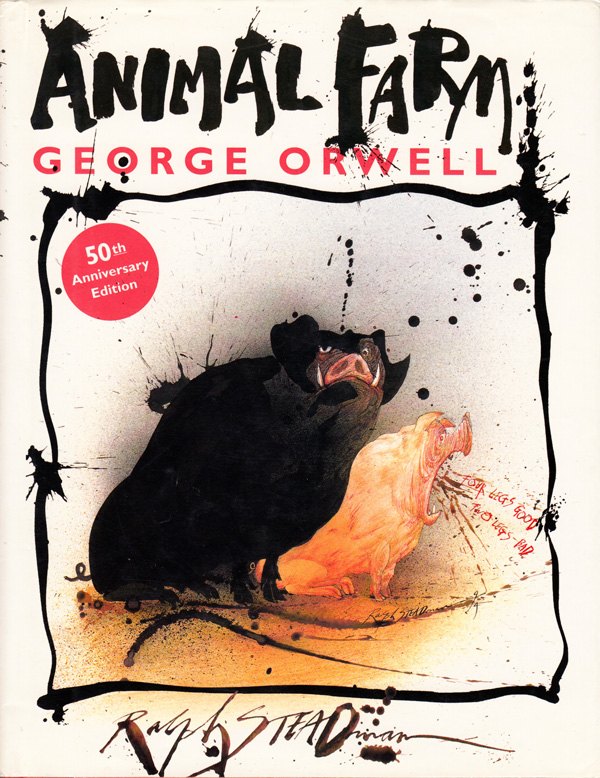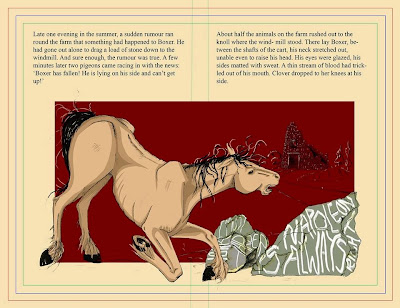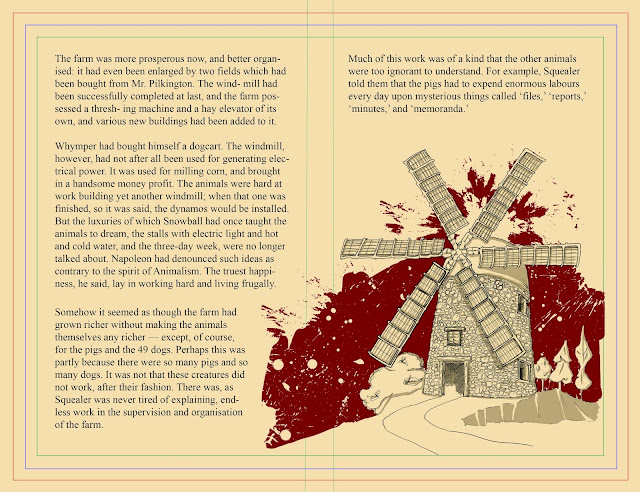 |
| Thumbnail |
Materials
 |
| Character development page coloured with coffee |
These works are very bold and hard hitting, and I just could not reproduce this effect using graphite or fine liner, but with gouache I felt I would have more success and so I set to work reproducing some of the propaganda posters, using the bright, vibrant highly pigmented paint.
The paint worked relatively well and I was able to get both the bright, bold, block colour but also the subtle, muted hues required when I recreated this poster from 1919 that called the Russian people to arms. I was attracted by the strong geometric shapes that made up the middle star, hammer and sickle.
I was not completely happy with this finished product because my lack of experience using gouache meant that I did not get the consistent flat, even coloured effect I was attempting to reproduce.
 |
| Propaganda poster with limited colours. |
In another attempt with the gouache, I recreated the poster above, but with some changes suited to Animal Farm, replacing each man with a character from the book that also fit the role portrayed.
Again I had some success, the colour was bright and had the visual impact, however there were some places where the paint did not cover as flawlessly as I wanted, leaving streaks and an uneven finish. I feel that this was due to my lack of experience using this medium. Because of this I decided not to use gouache in my final illustrations as I felt the work would suffer from my lack of skill with the paint.
Screen printing this same design provided a wealth of experience with a new technique, one that suited the style I was attempting to recreate. It was definitely suited to the poster I printed, but for the final illustrations, I foresaw many stumbling blocks. Time wise, it wasn't possible to create every image this way as it would require unfettered access to the print room, which would prove problematic as sometimes this just wouldn't be possible.
The book dimensions I am working with (11cm x 18cm) are quite small, and while it would be possible to create images via screen printing larger before scaling them to size digitally, I felt the whole screen printing process and effect would be lost in doing so, making it a somewhat redundant step. But what I could do, was to create the images digitally (something which I would have done anyway had I gone the screen printing route), ready to be printed directly onto a book page. These digital files could then be used to create screen prints also, recreating the illustrations into full size posters. I felt this was the most time and cost effective way to do this, as it allowed me to create the designs for the book, but also allow me the flexibility to create more art works as companion pieces for the work.
In the end when it came to producing my final illustrations, I initially opted to do it all using computer software, however I wasn't completely satisfied with the result and so reverted back to a more traditional medium when designing the line work in particular. Where the digital influences really helped, was in applying the colour and providing a means for more experimentation. I was able to use a variety of tools and brushes in photoshop, which allowed easy editing of line work and clean up, as well as colour adjustment and changes, until I was completely happy with the look.
Looking back I feel I made the right decision in choosing the materials and mediums I did, however if I had to do it again, I would have pushed harder to get a more preferred result with the gouache. I also would have experimented with Copic Markers earlier on, as it was only very recently I discovered their capabilities and ease of use. They actually provide a smooth, flat colour finish that I was after.
I struggled a lot with colour, especially when I dropped the restricted palette. Having so many options and opting for a more realistic scheme of colour ended up causing so many problems and the work became unlike any of the Russian propaganda art that I had researched. Going back to that restricted choice put the work back on track and looking more like what I had imagined. If I was to do this again, I would again limit my colour options, but would experiment more with vivid hues but initially red was the logical choice as that is synonymous with Russia.




























